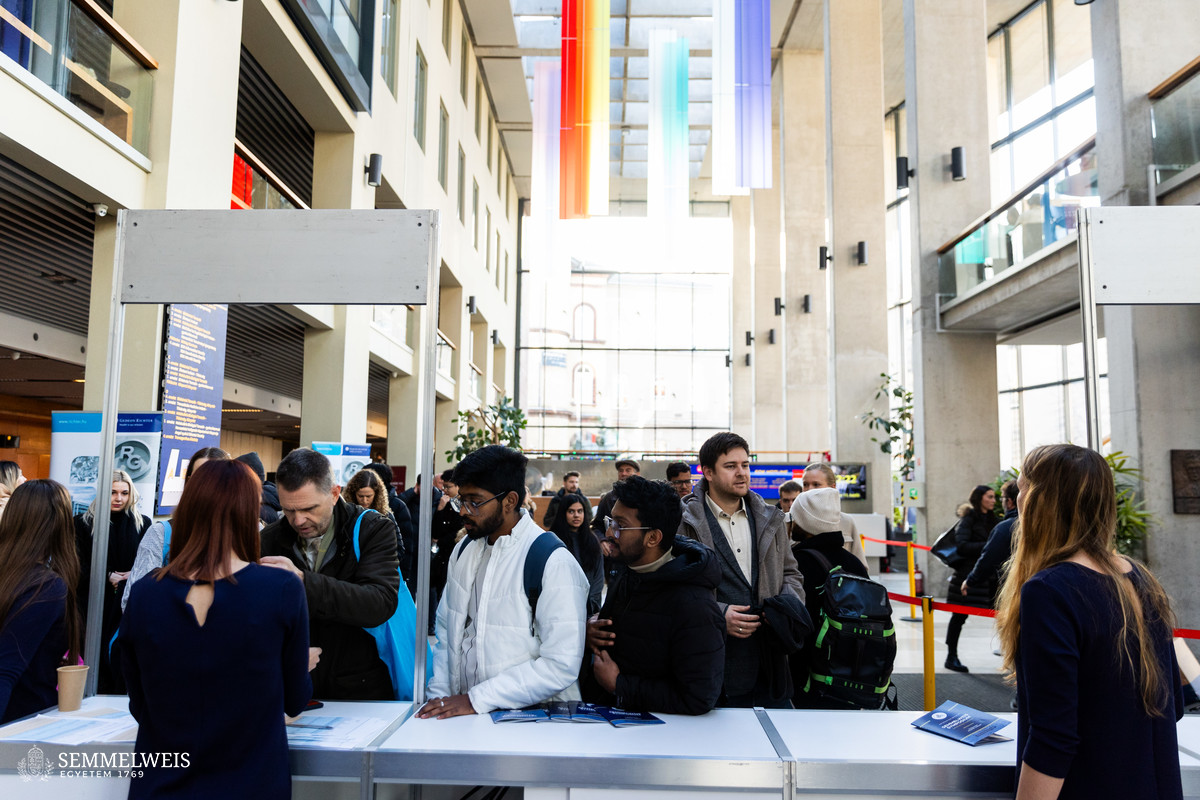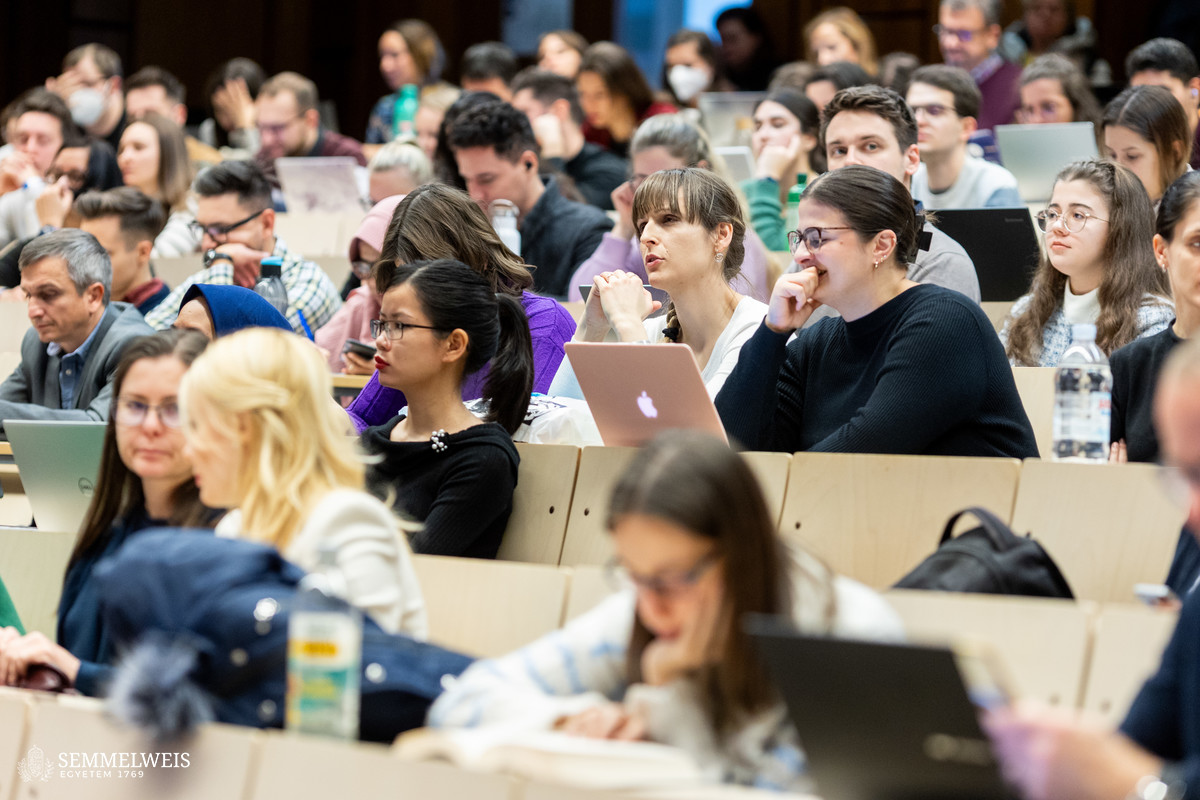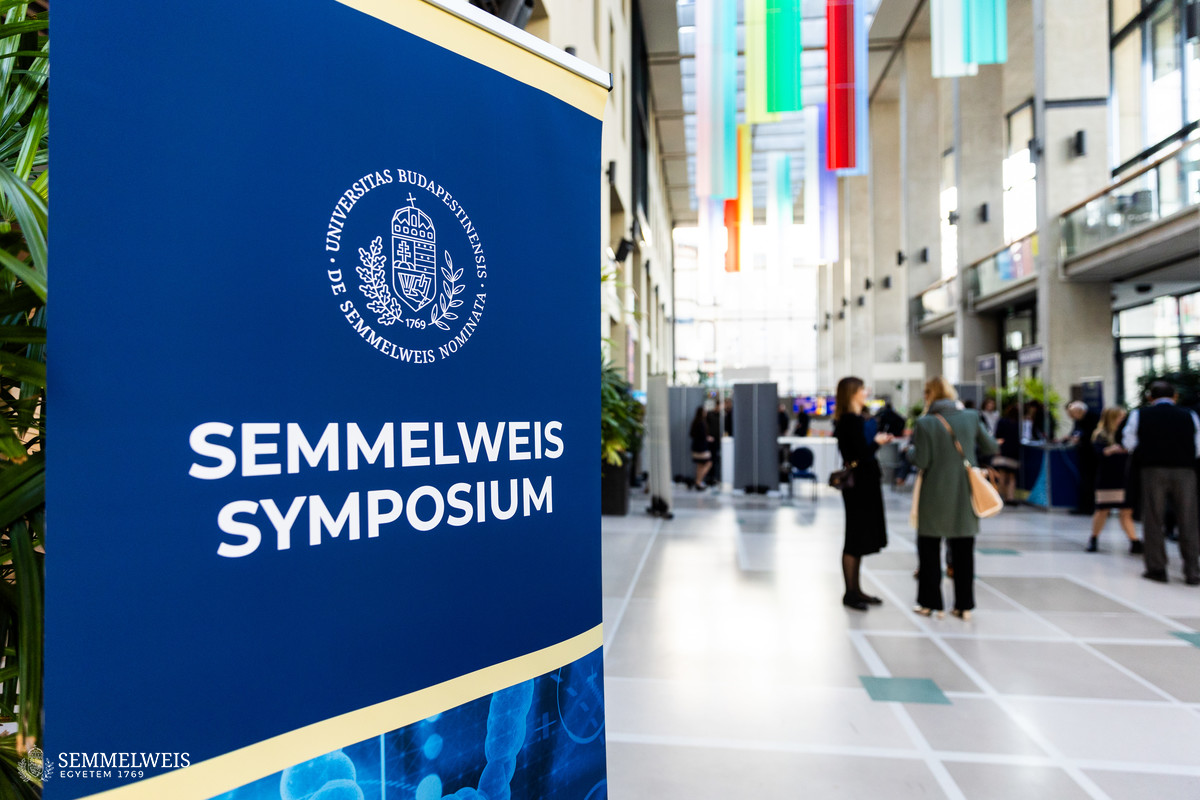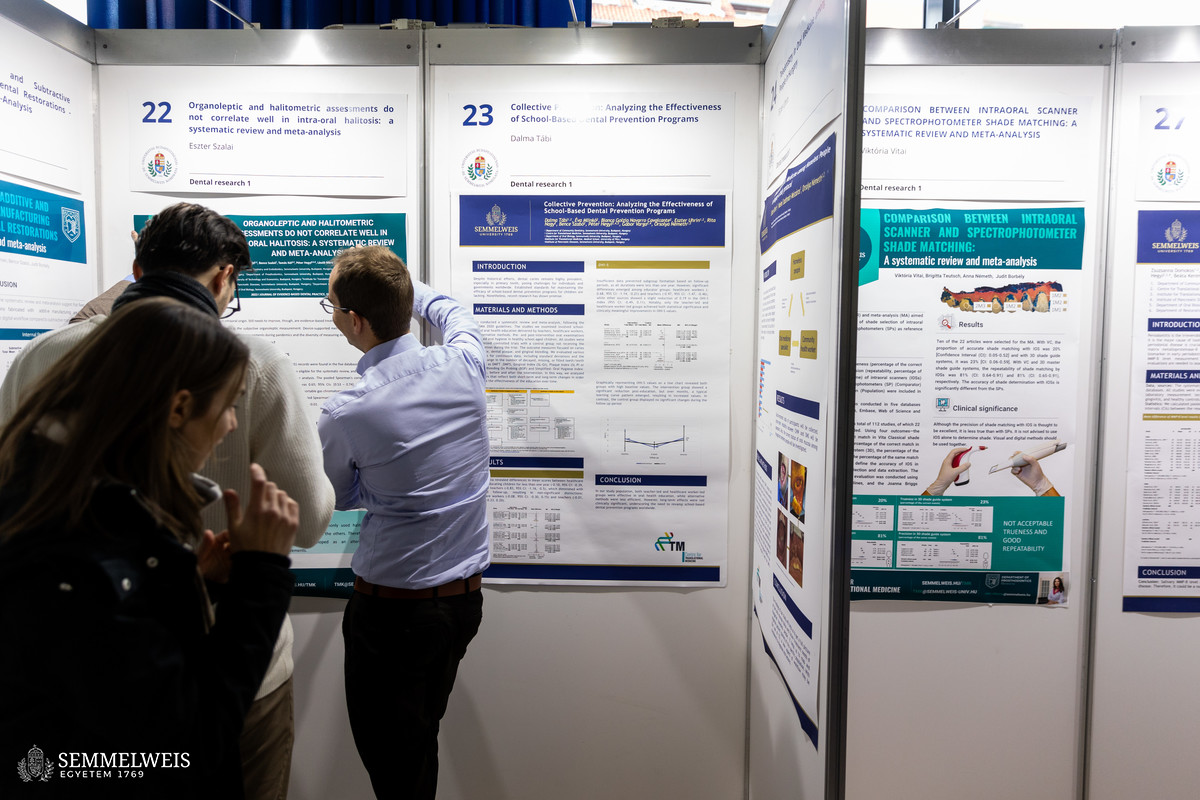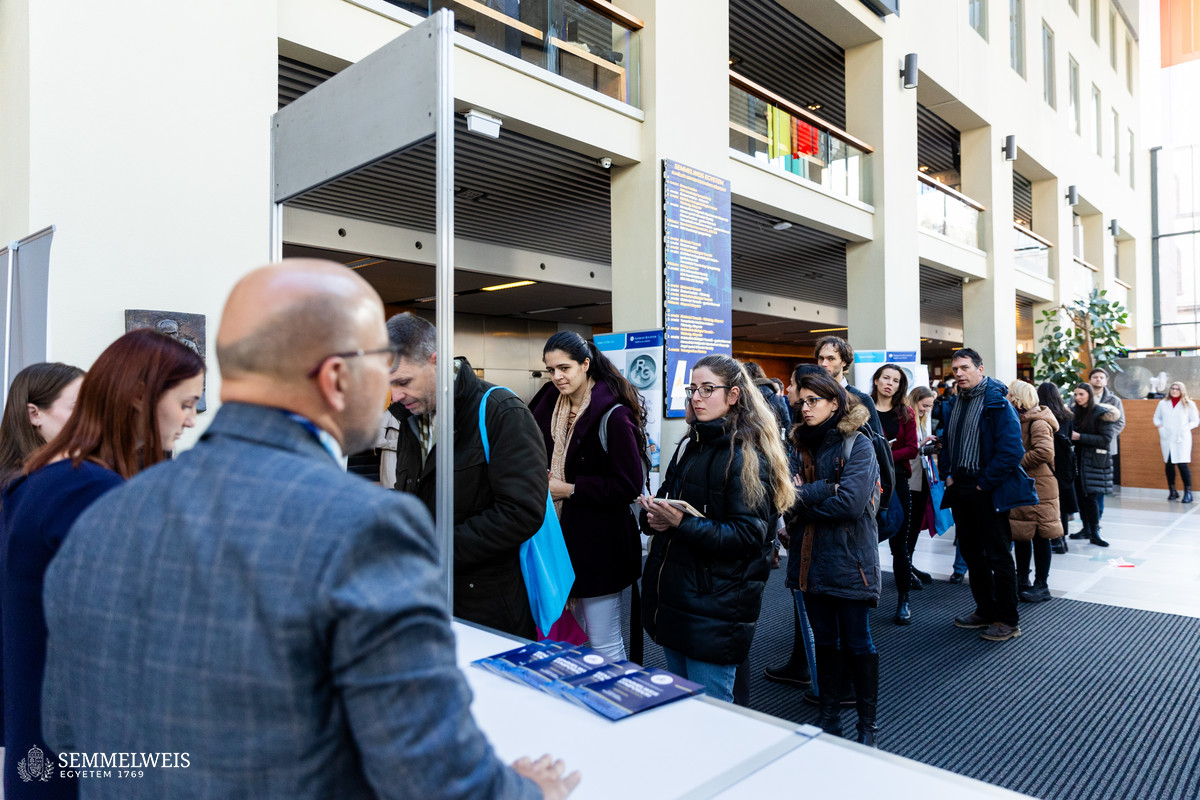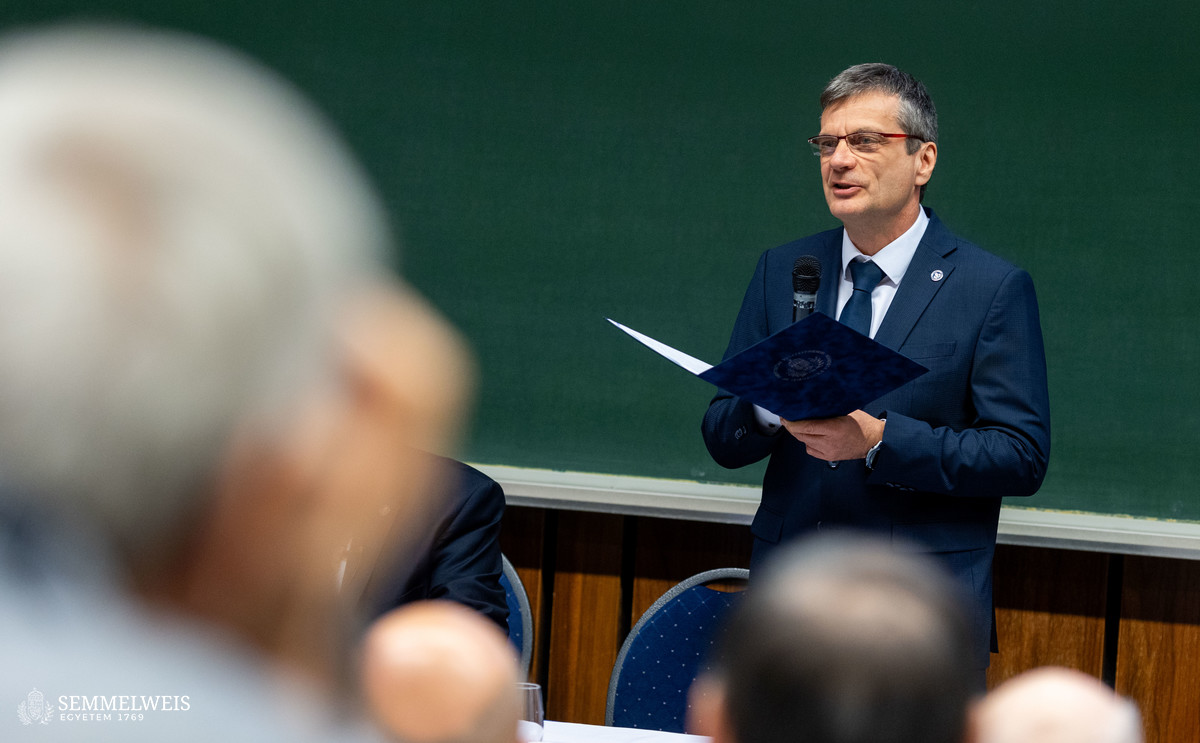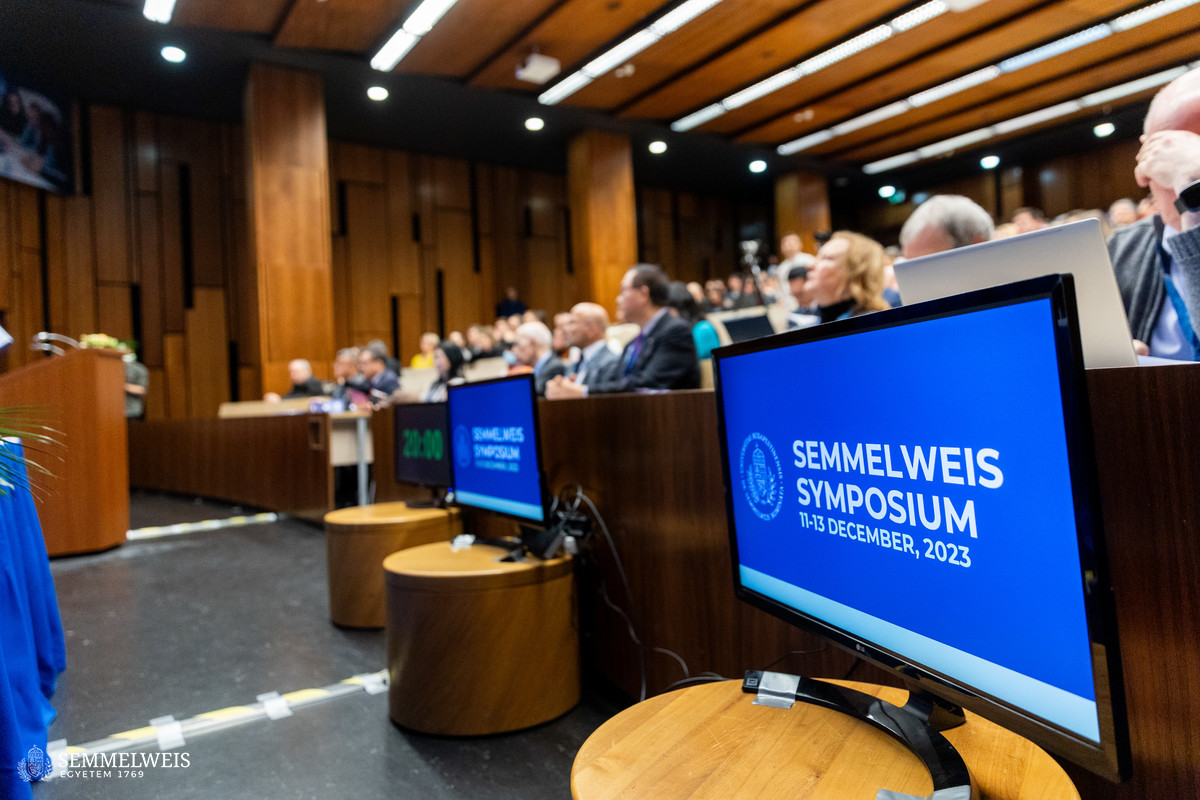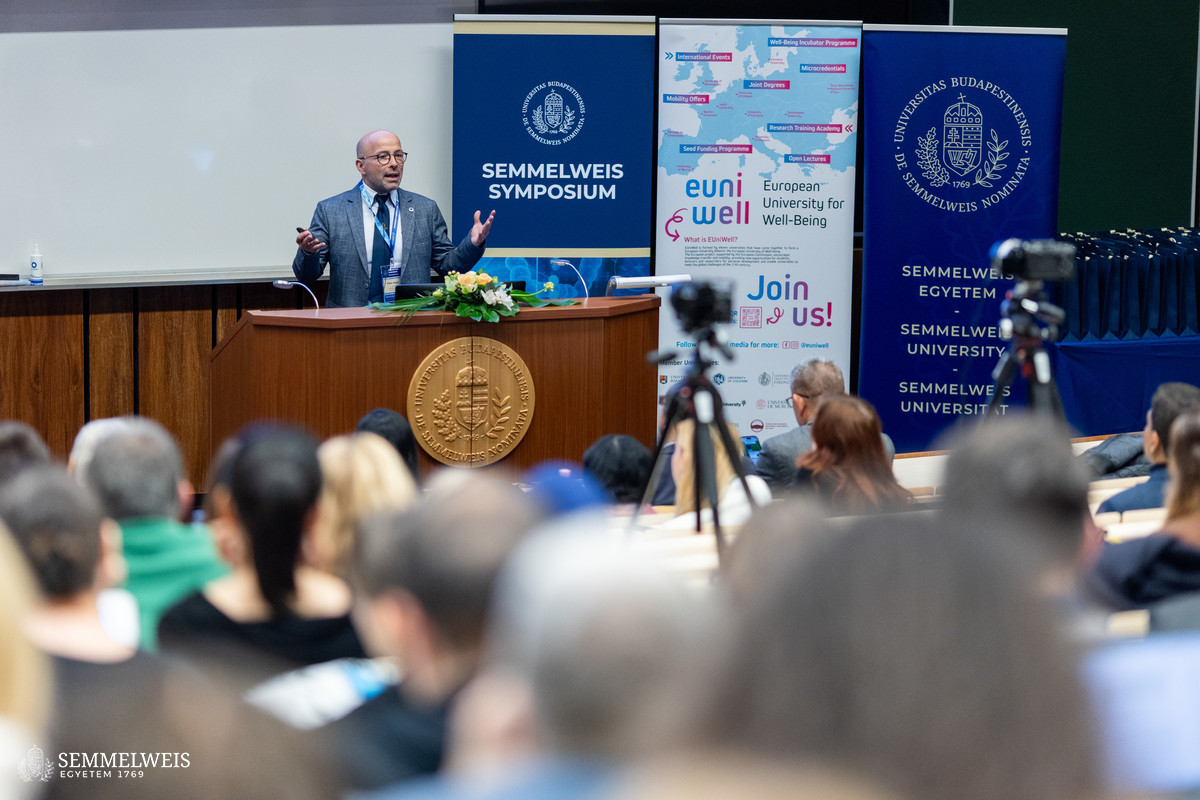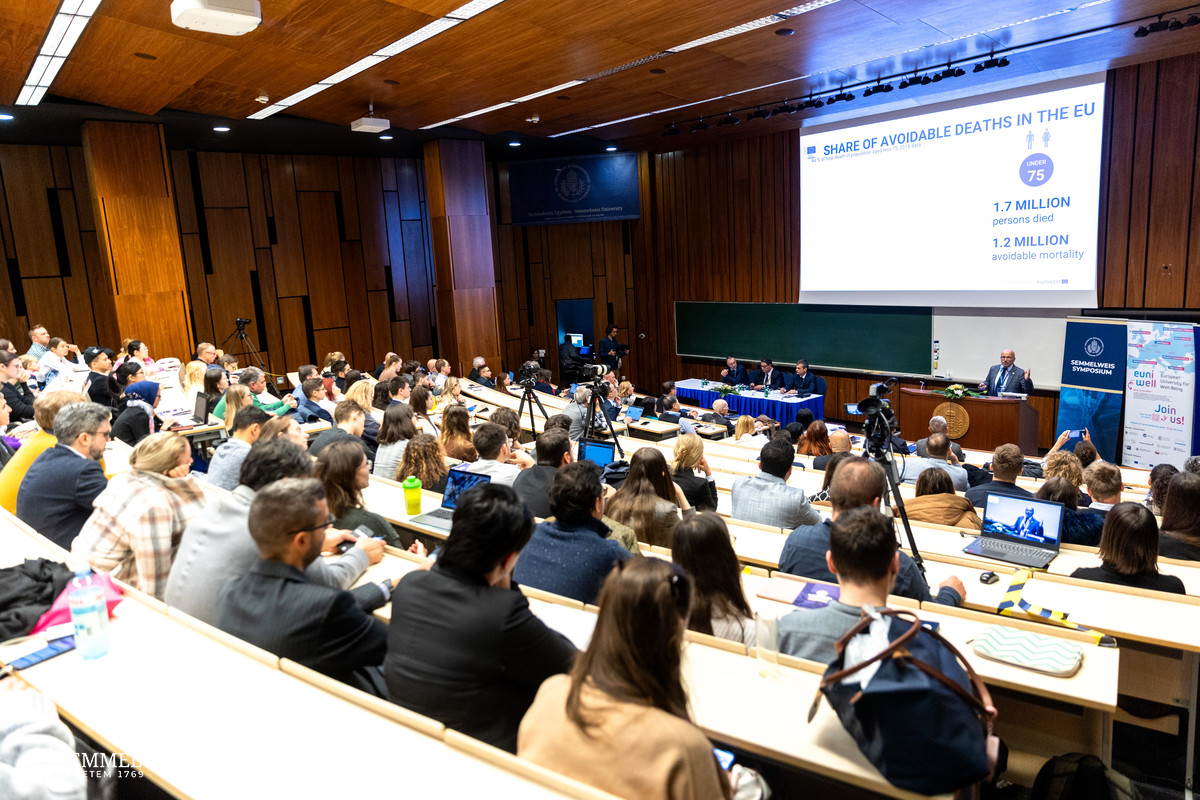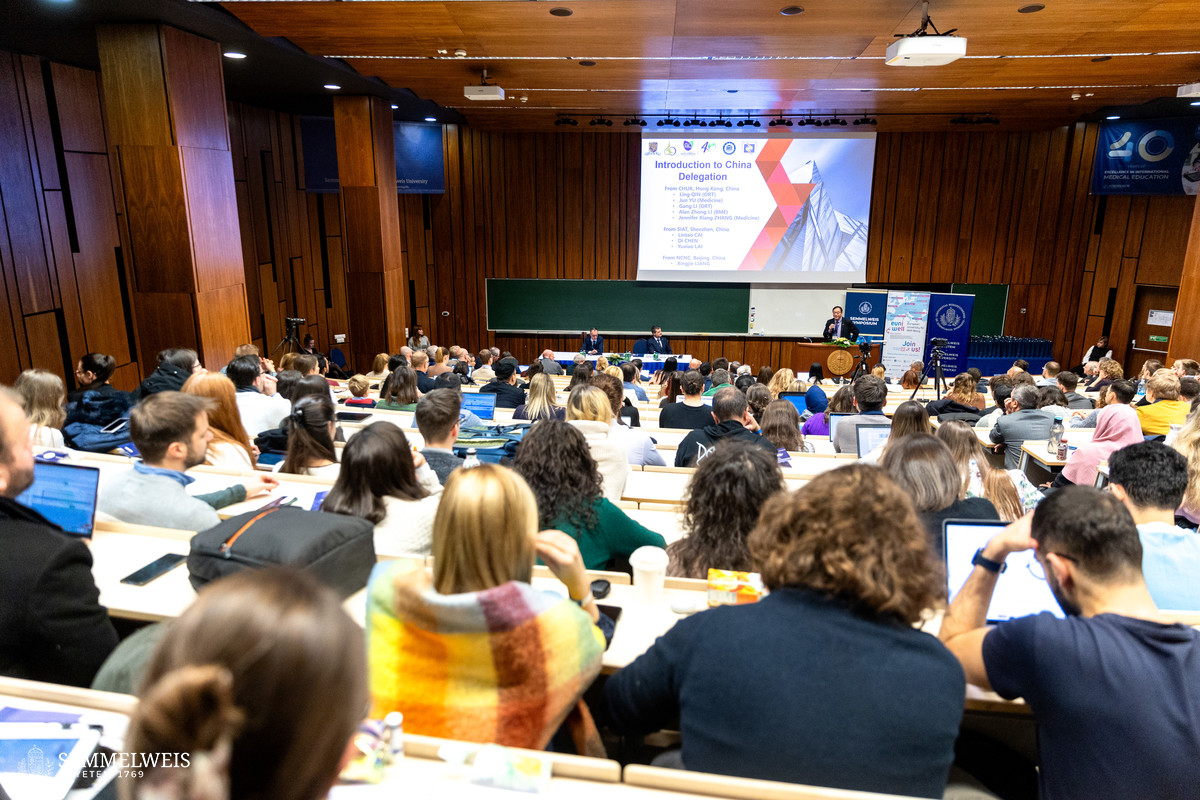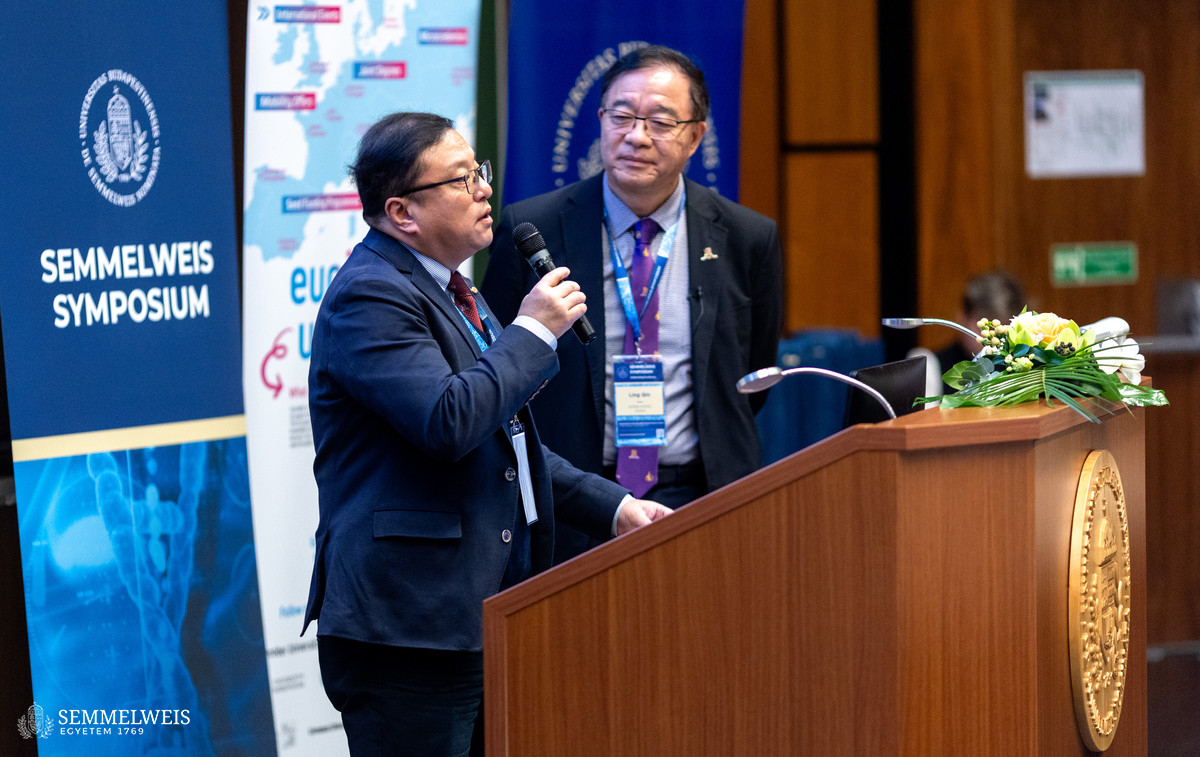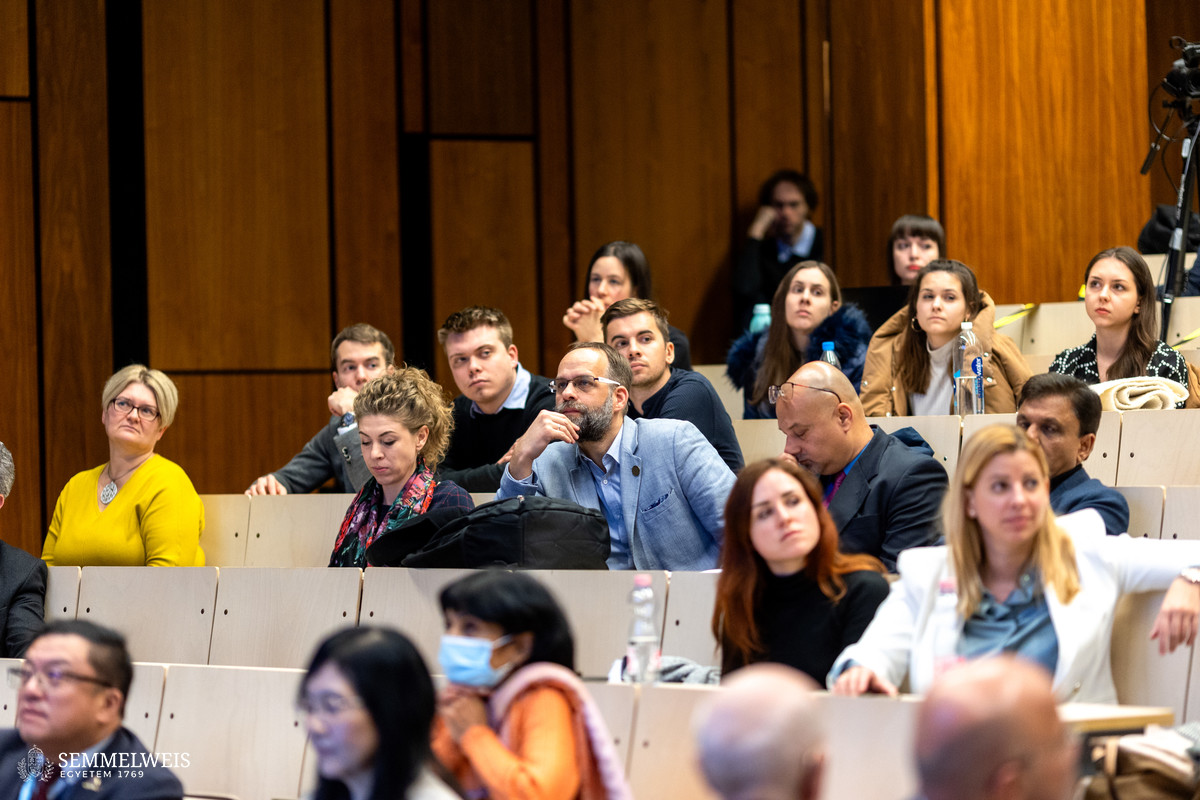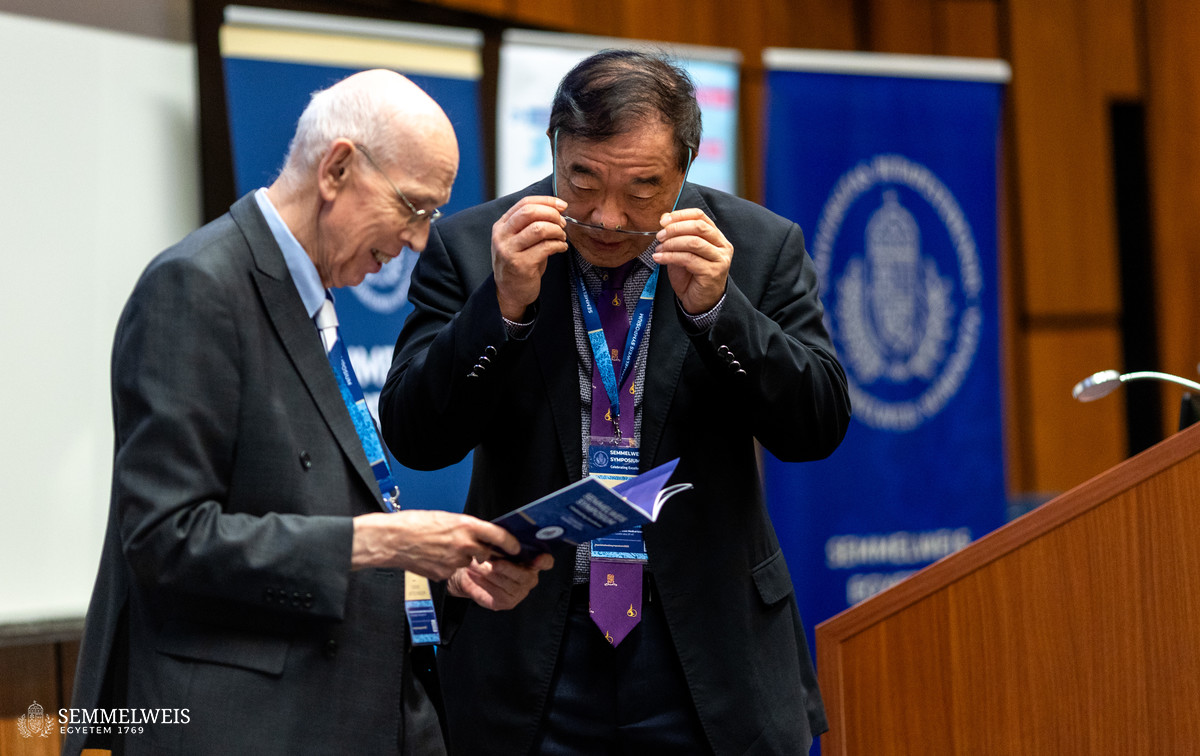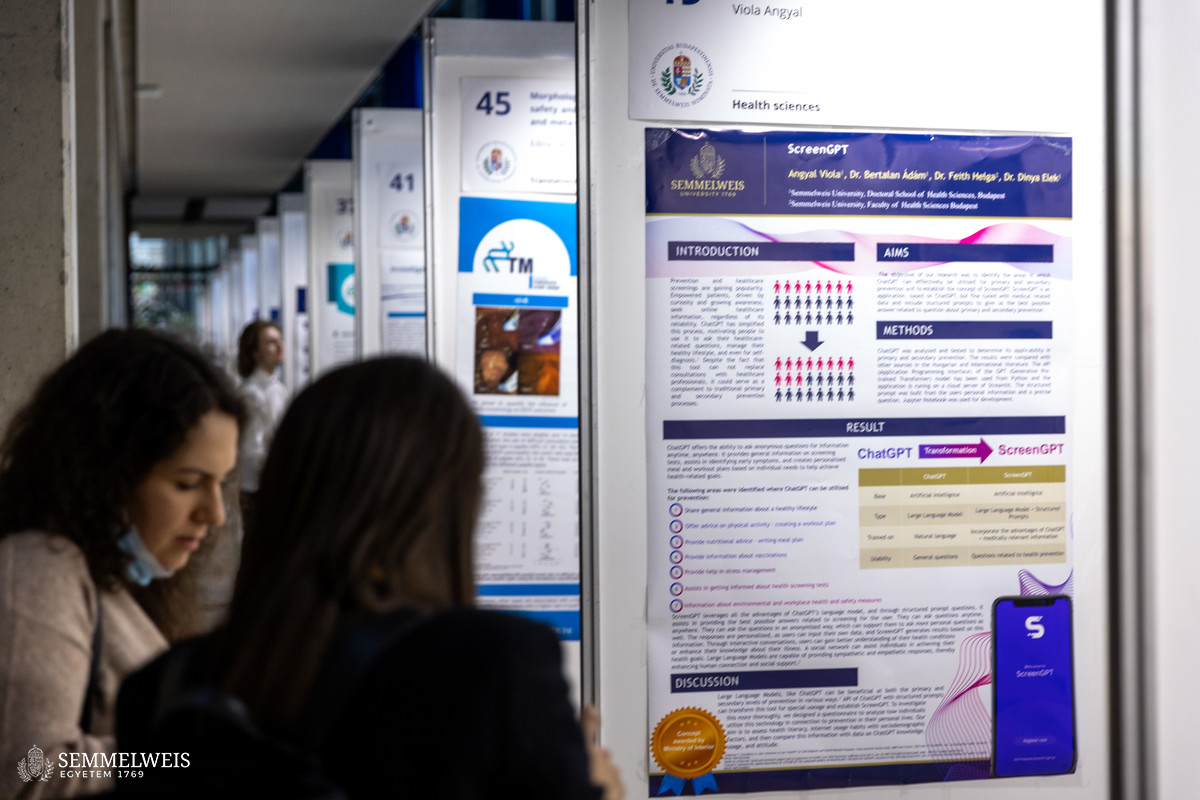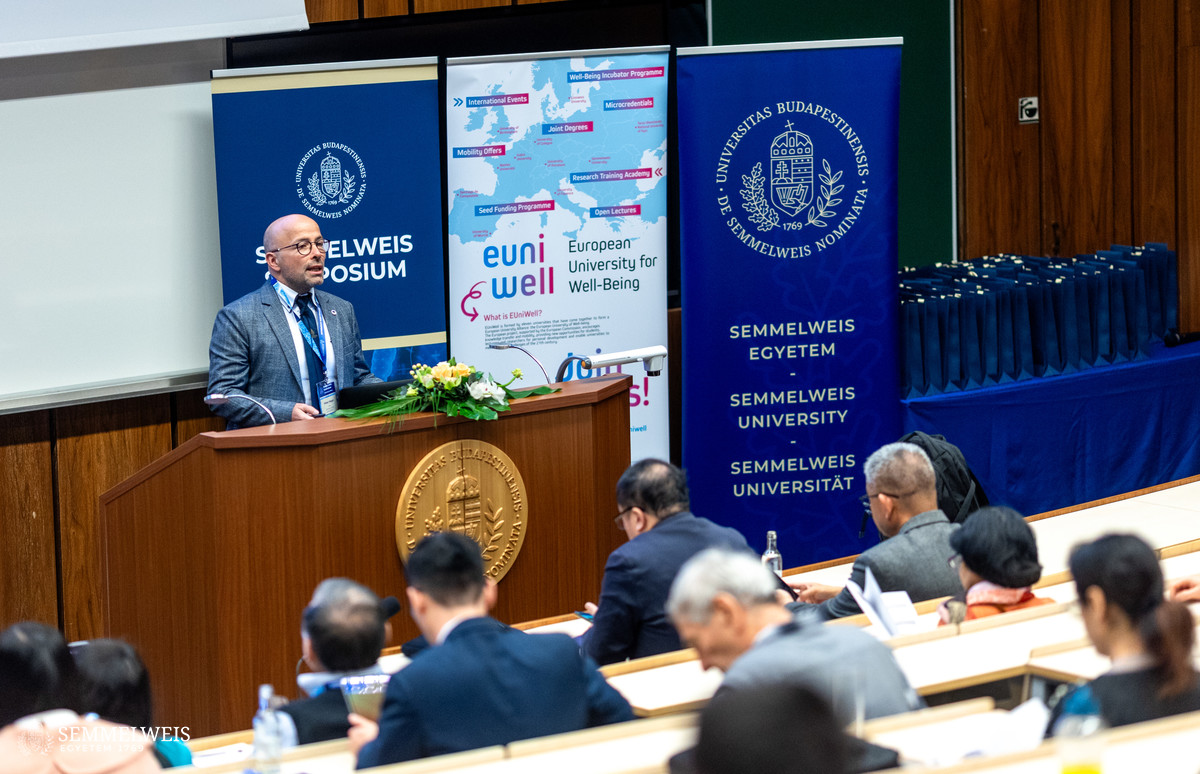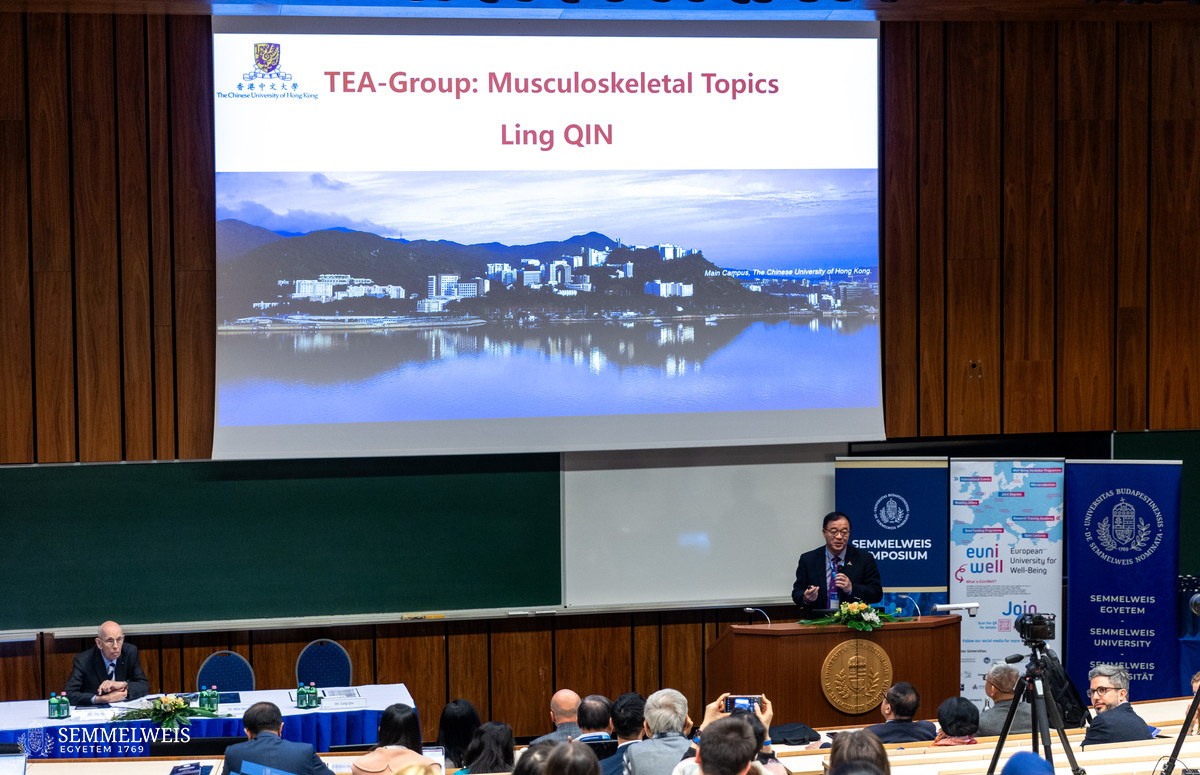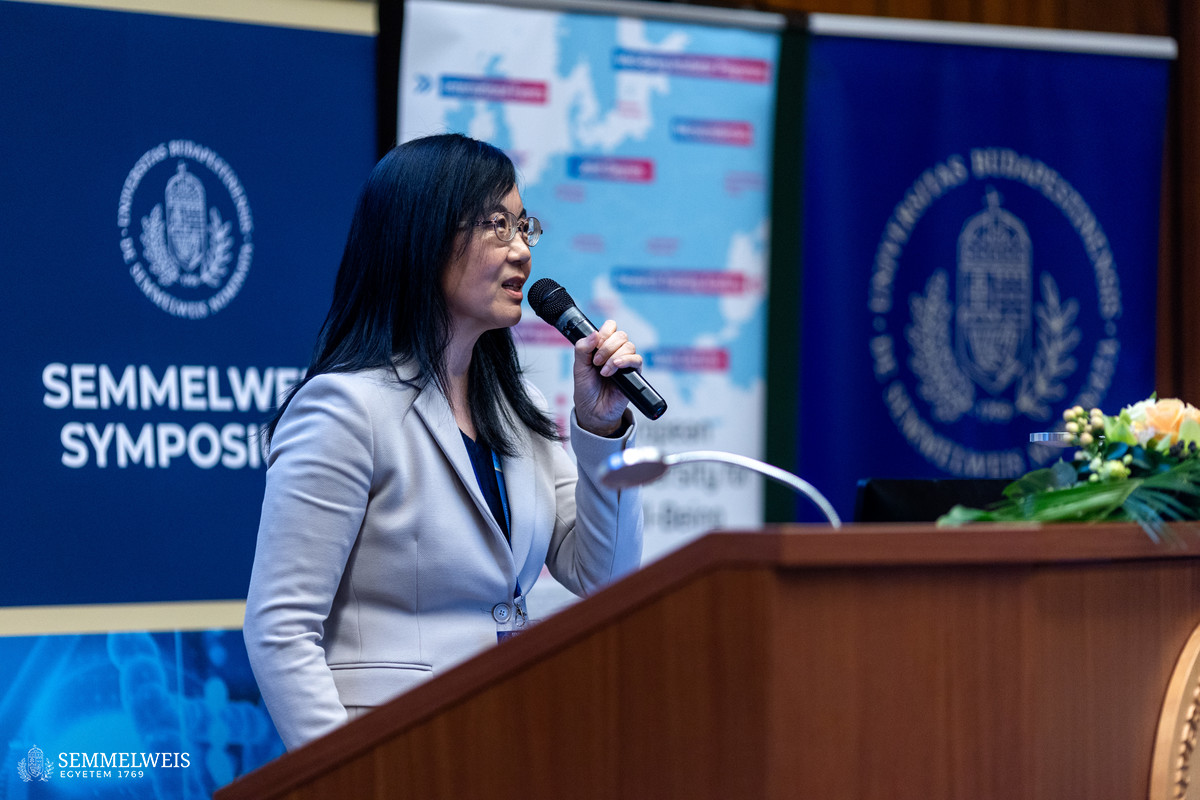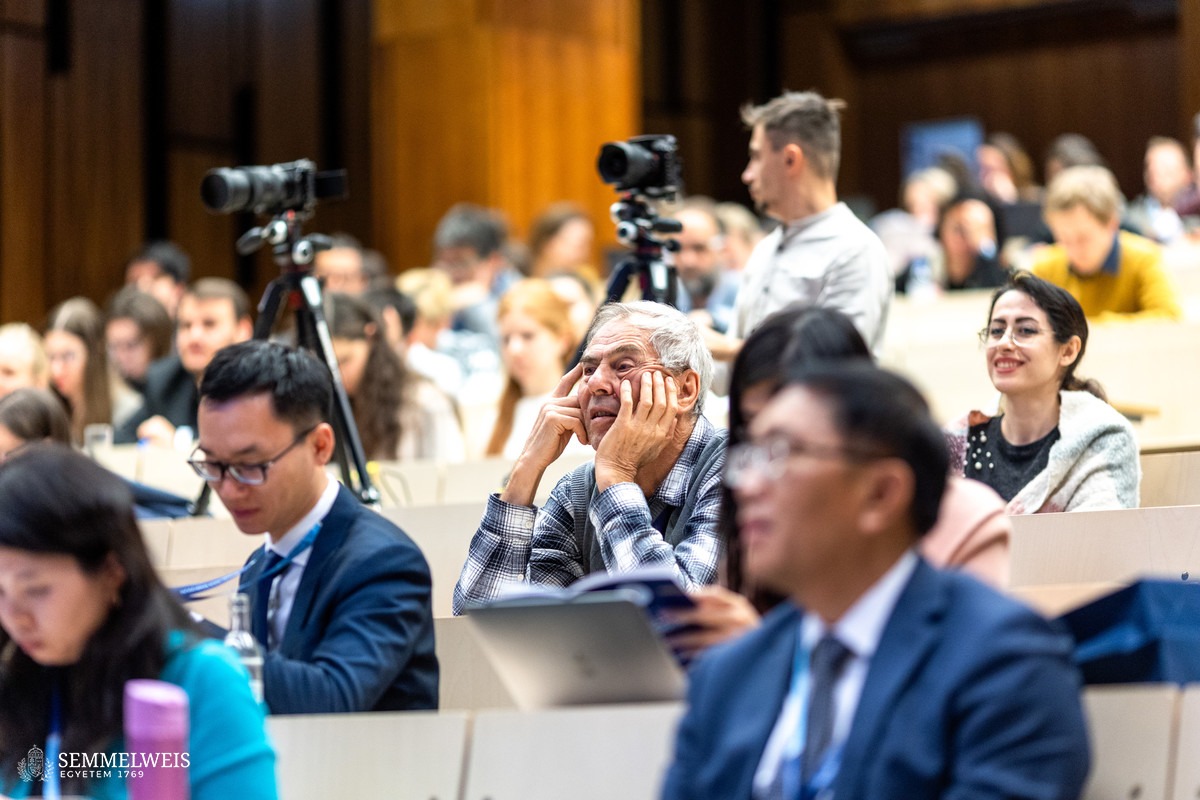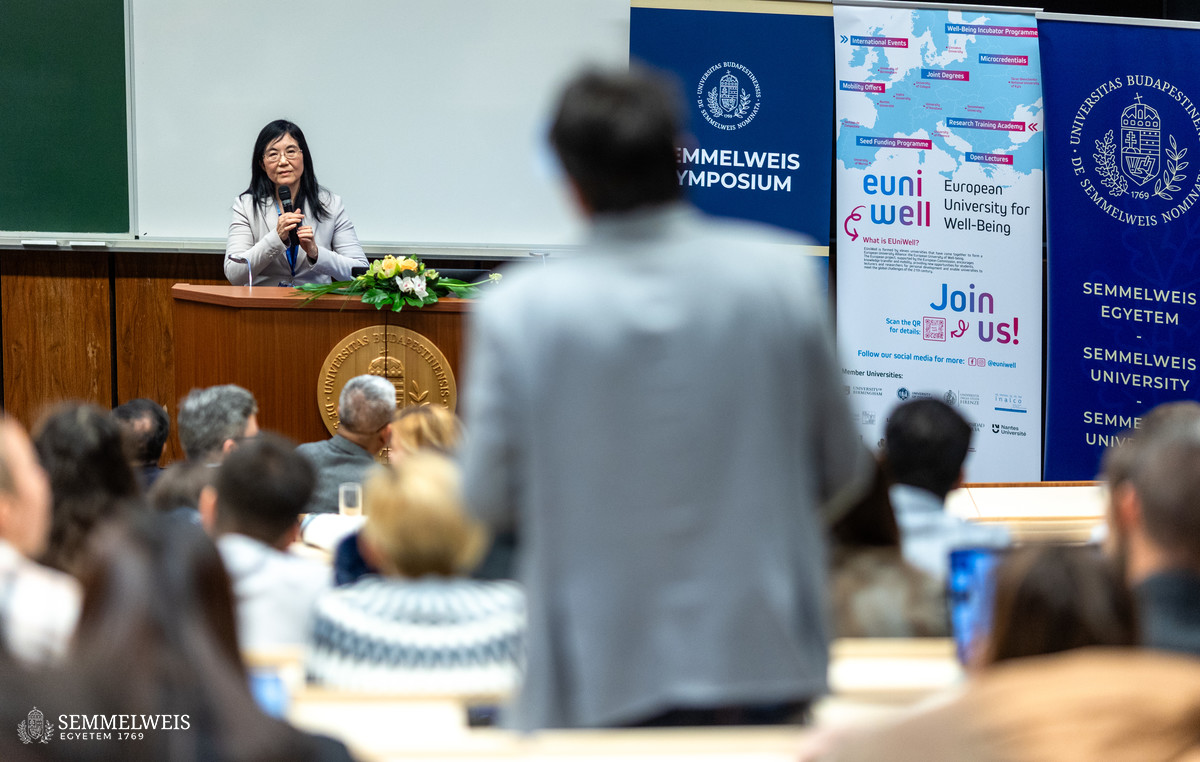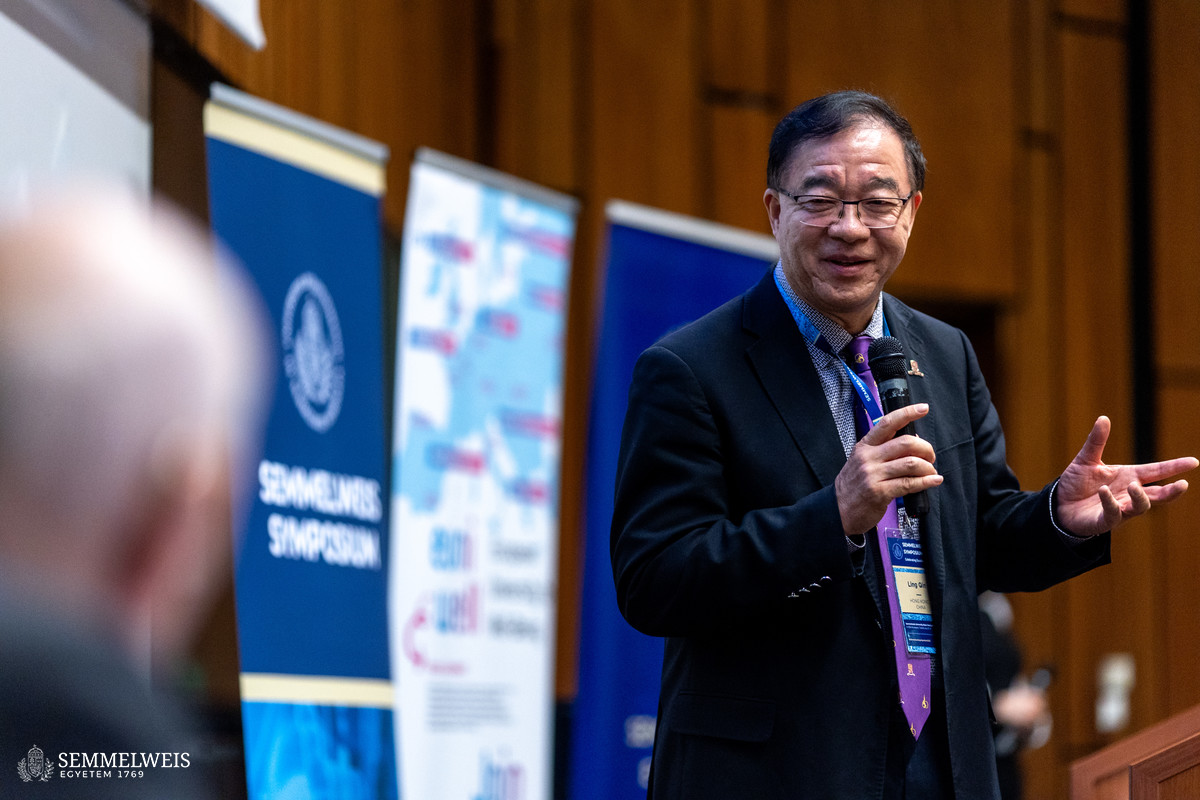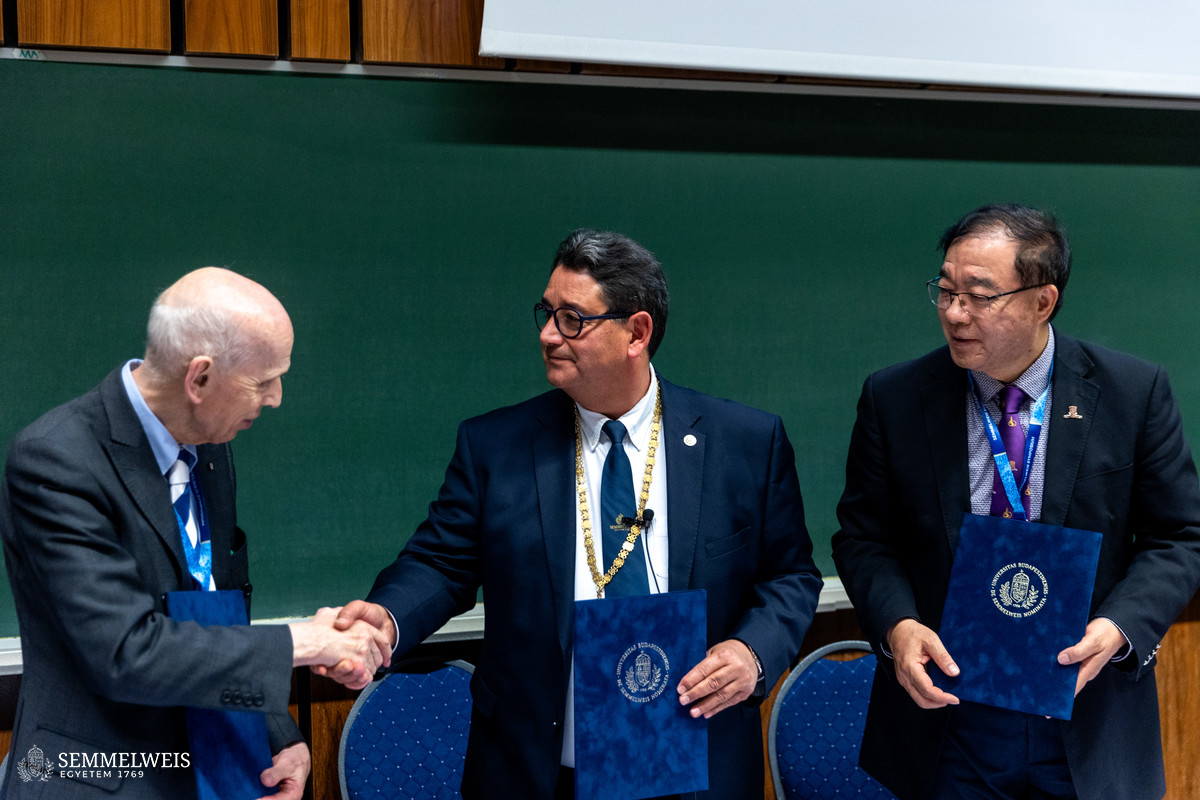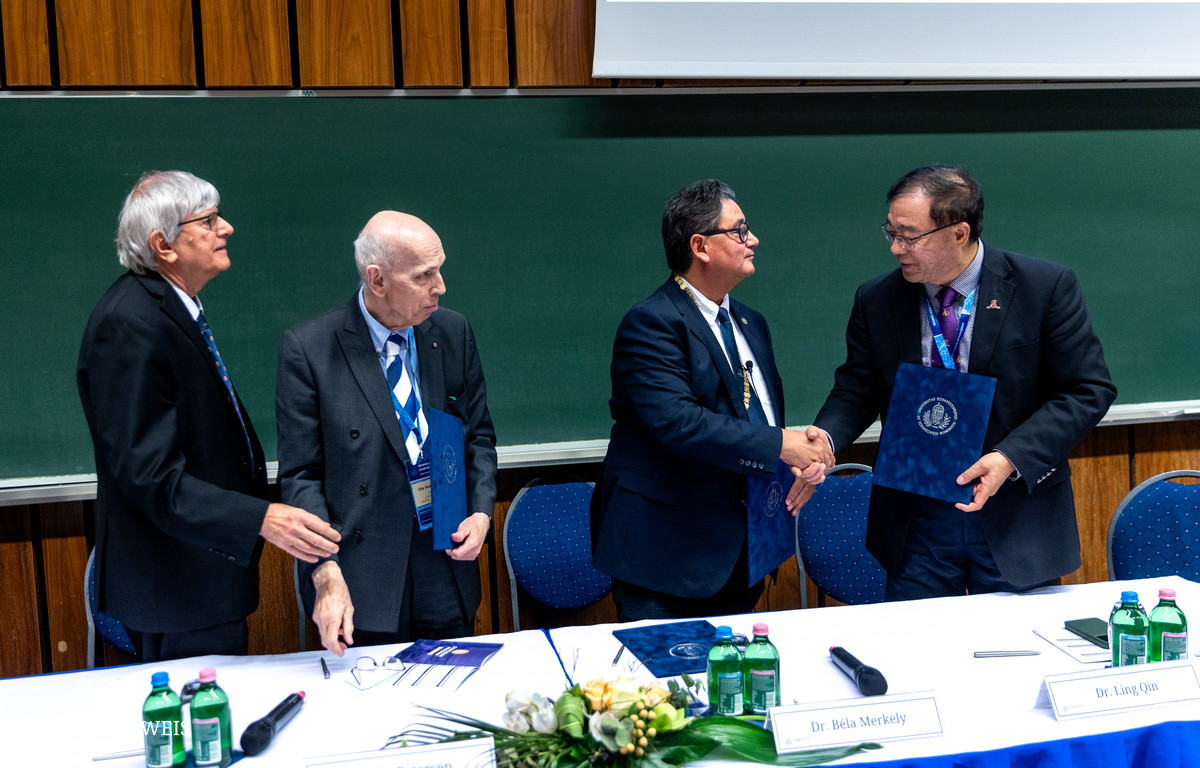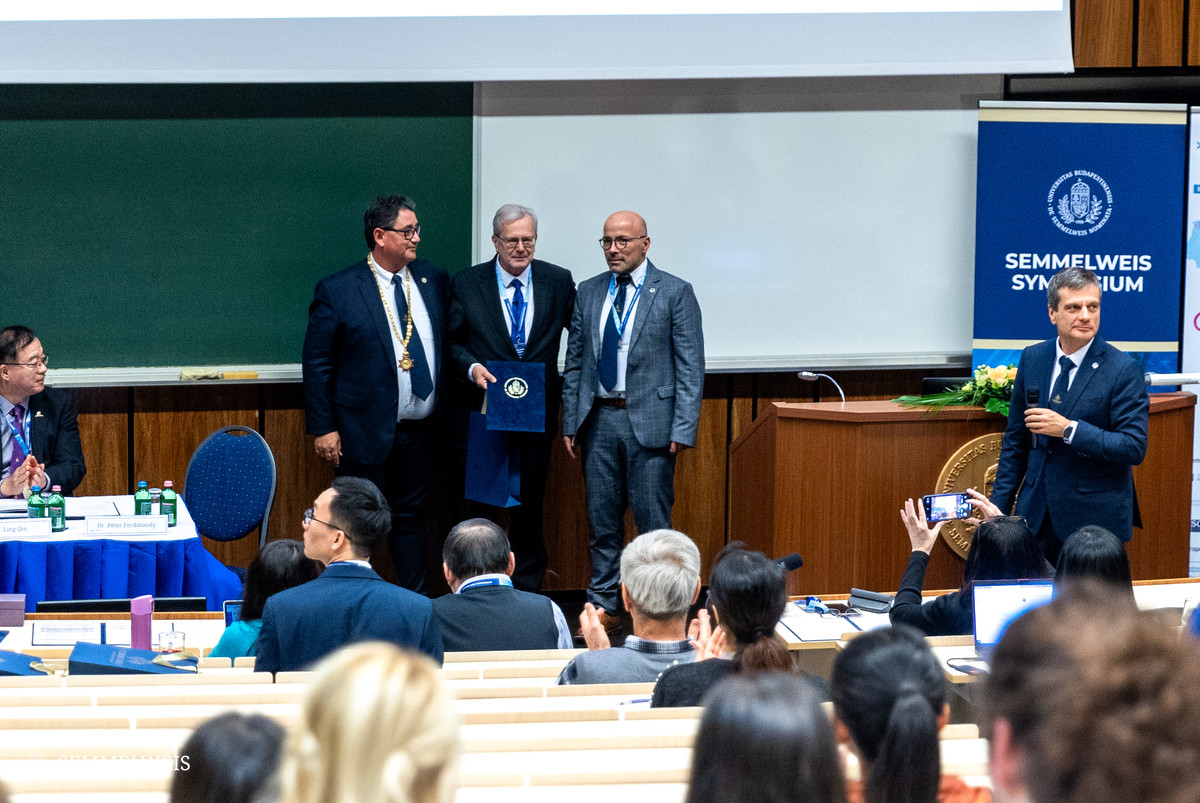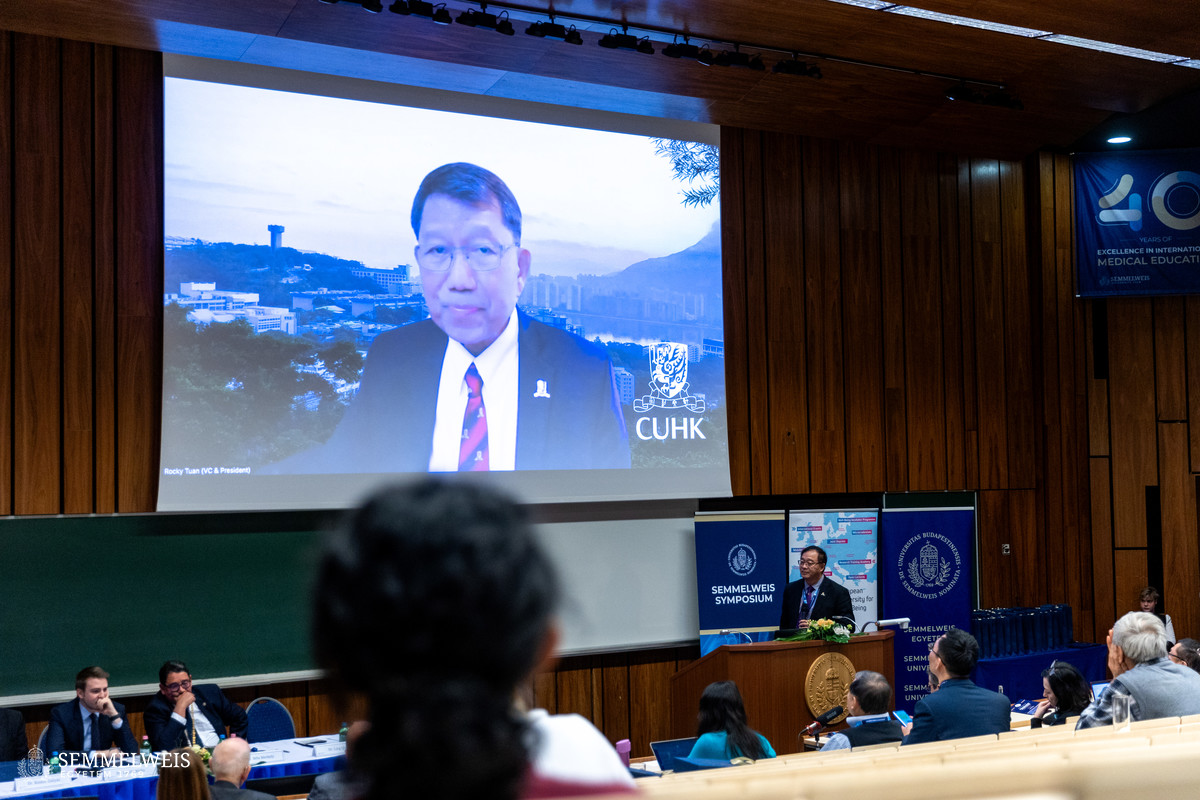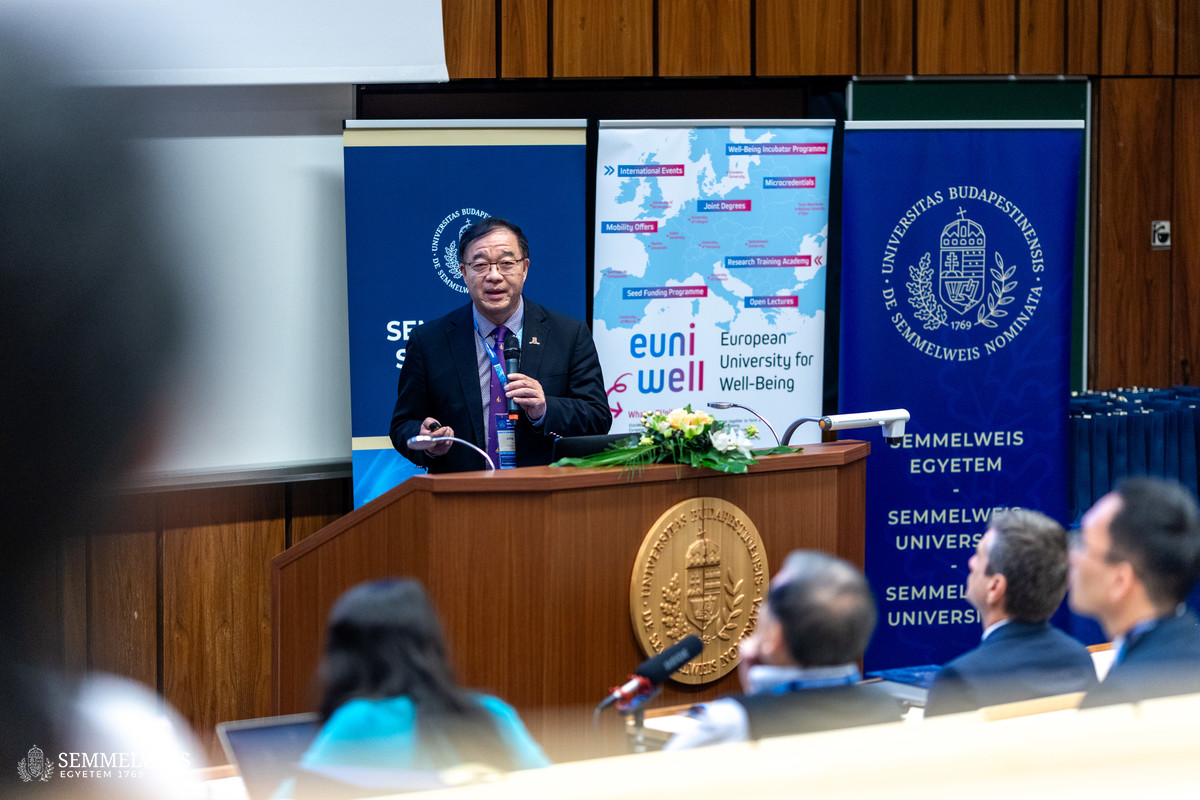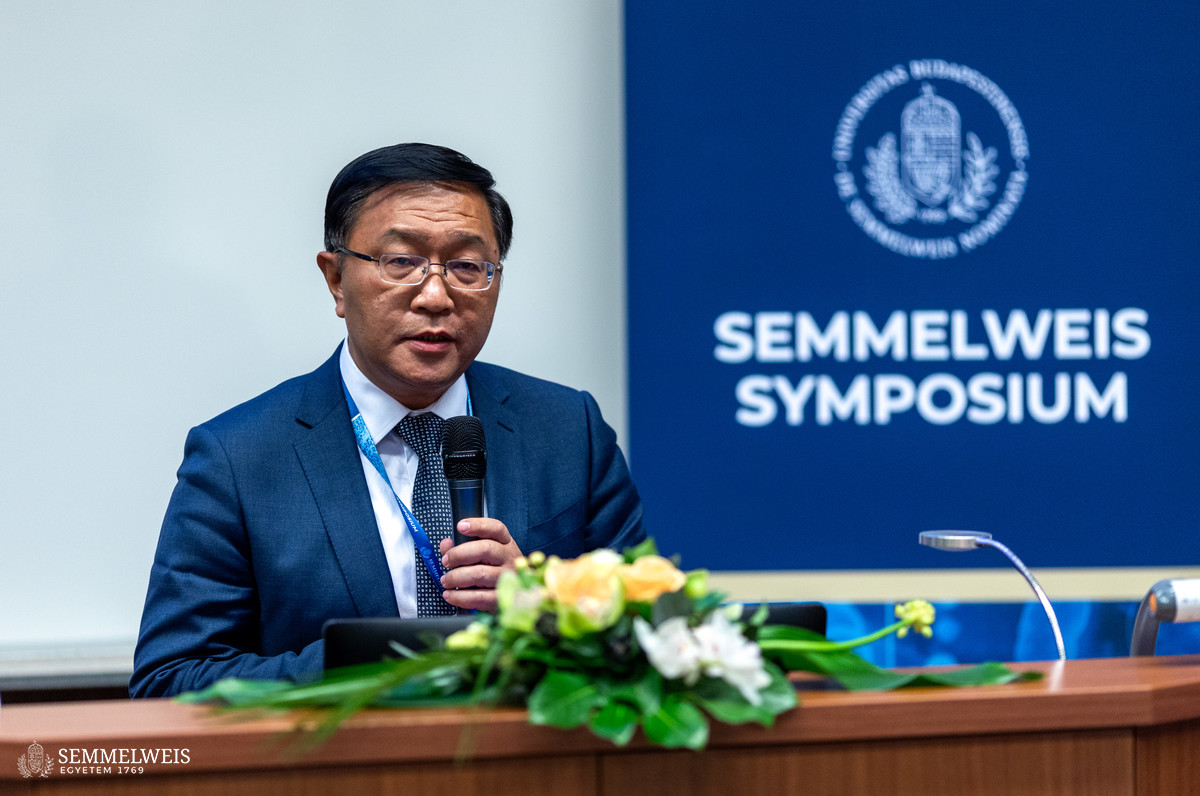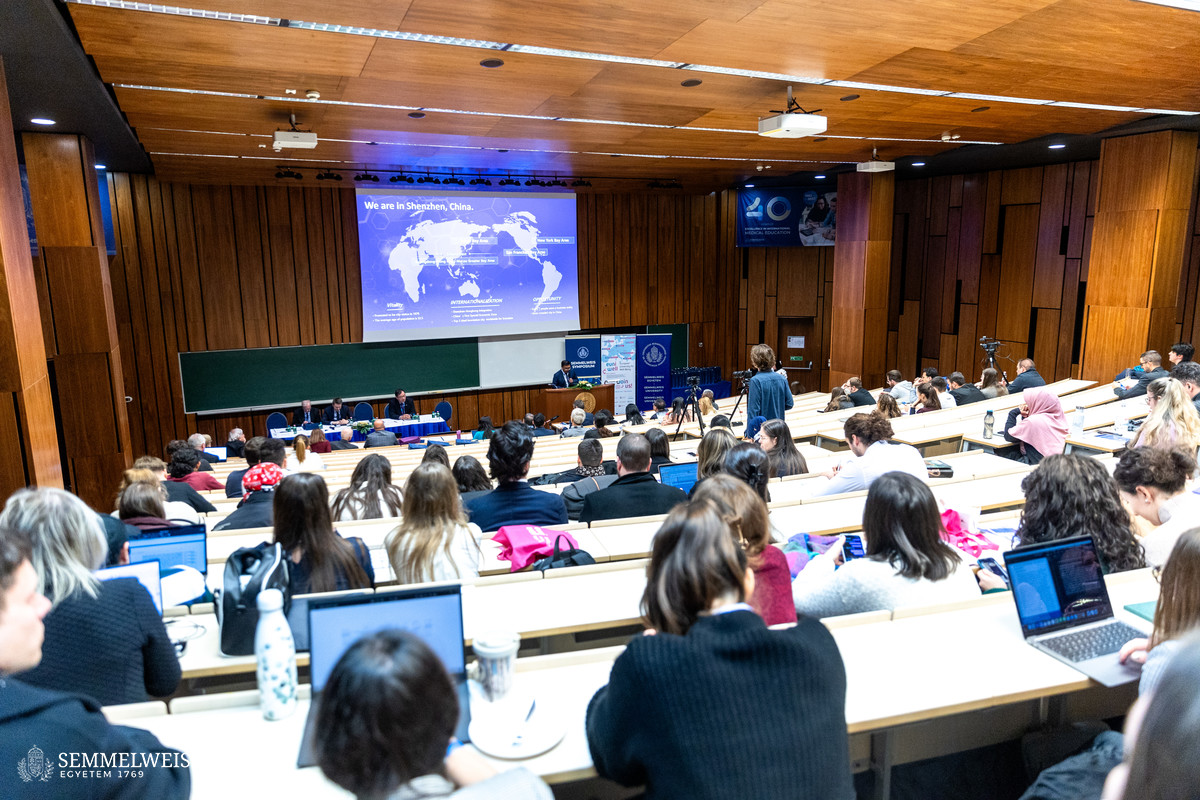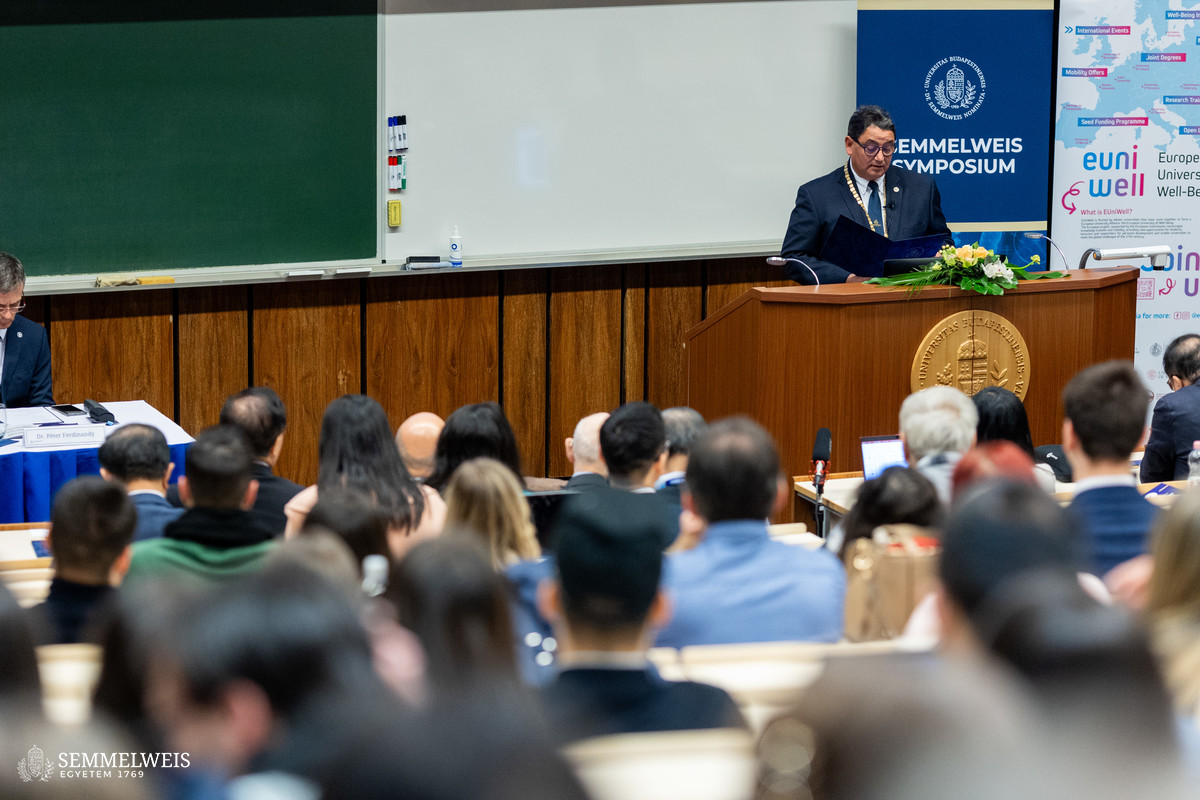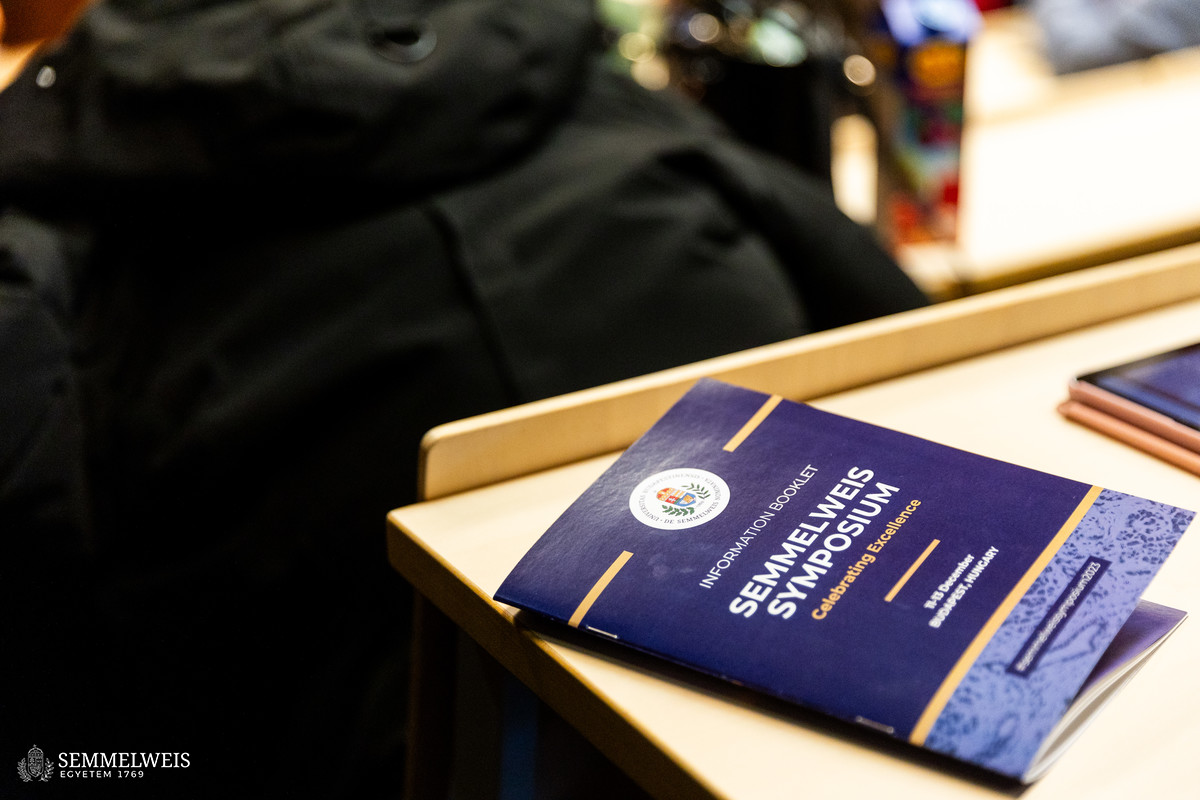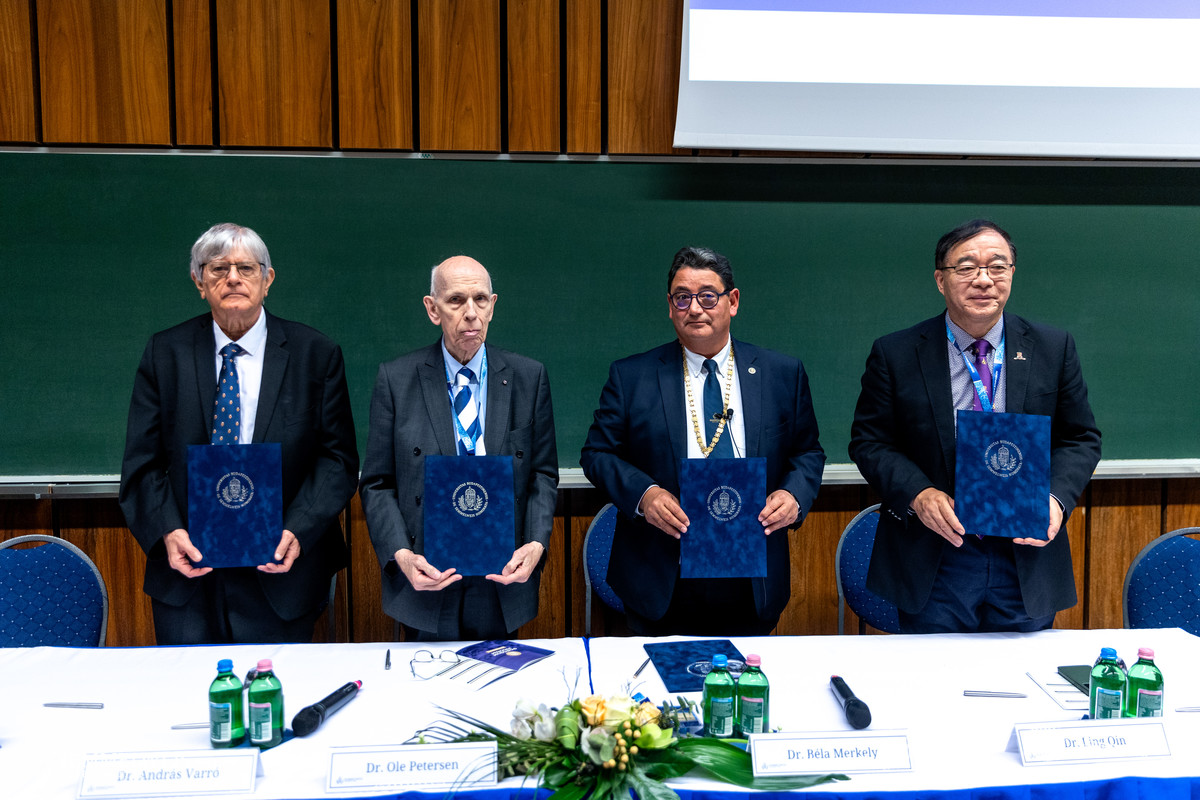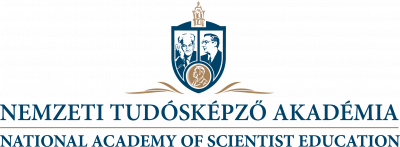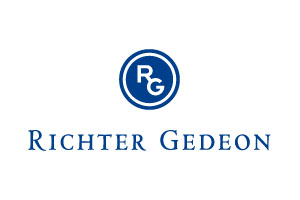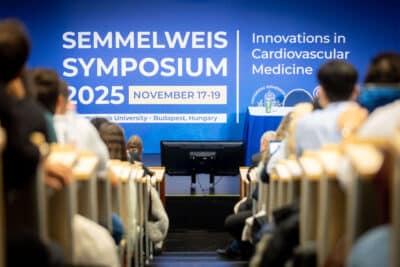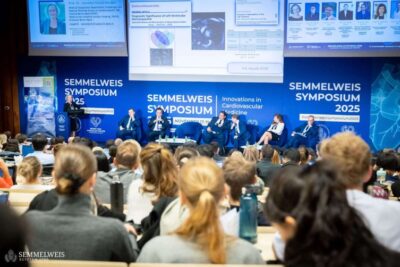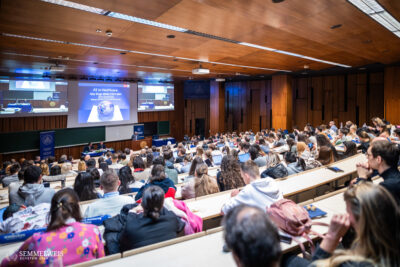The three-day event was opened by the rector of Semmelweis University. Referring to this year’s motto, „Celebrating Excellence”, Dr. Béla Merkely reminded participants that while excellence may seem to be linked to the achievement of a particular accomplishment, it actually requires a strong inner drive, a firm belief, and years of steady and consistent work.
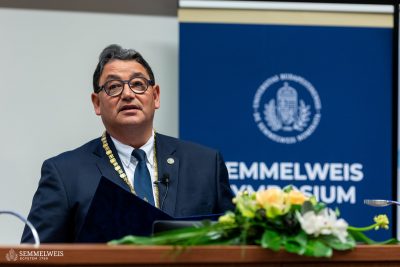 He set the recent Hungarian Nobel Prize winners, Dr. Katalin Karikó and Dr. Ferenc Krausz, as the most current and uplifting example of this. “Their success also draws attention to Hungarian higher education, science, and the importance of international collaboration. The key to scientific success and progress today is cooperation, networking and cross-border knowledge transfer. This is the purpose, meaning and mission of Semmelweis Symposium,” the rector stressed. He added that the university is proud to have an intense and ongoing scientific relationship with both of the newly awarded scientists, and he considered equally important and honoring that Dr. Randy Schekman, a Nobel laureate, also gives a lecture at the symposium.
He set the recent Hungarian Nobel Prize winners, Dr. Katalin Karikó and Dr. Ferenc Krausz, as the most current and uplifting example of this. “Their success also draws attention to Hungarian higher education, science, and the importance of international collaboration. The key to scientific success and progress today is cooperation, networking and cross-border knowledge transfer. This is the purpose, meaning and mission of Semmelweis Symposium,” the rector stressed. He added that the university is proud to have an intense and ongoing scientific relationship with both of the newly awarded scientists, and he considered equally important and honoring that Dr. Randy Schekman, a Nobel laureate, also gives a lecture at the symposium.
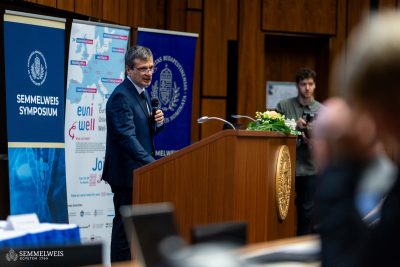 Dr. Péter Ferdinandy, Vice-Rector for Science and Innovations introduced Semmelweis University to the audience in numbers. He briefly listed the institution’s position in international rankings and its main parameters regarding the innovation ecosystem, namely that it boasts with over 300 research groups and more than 15,000 publications annually, with a steep increase in the number of PhD students as well as the impact factor of university publications. Dr. Péter Ferdinandy outlined the university’s most important research, development and innovation goals and support system, the leading fields of scientific excellence, and stressed that in order to speed up innovations, they will further develop core facilities, the infrastructure for spin-off companies, incubation services for early-stage projects, and immerse students in innovation activities.
Dr. Péter Ferdinandy, Vice-Rector for Science and Innovations introduced Semmelweis University to the audience in numbers. He briefly listed the institution’s position in international rankings and its main parameters regarding the innovation ecosystem, namely that it boasts with over 300 research groups and more than 15,000 publications annually, with a steep increase in the number of PhD students as well as the impact factor of university publications. Dr. Péter Ferdinandy outlined the university’s most important research, development and innovation goals and support system, the leading fields of scientific excellence, and stressed that in order to speed up innovations, they will further develop core facilities, the infrastructure for spin-off companies, incubation services for early-stage projects, and immerse students in innovation activities.
Dr. Ole Petersen, Professor Emeritus at Cardiff University and Director of the Academia Europaea Cardiff Knowledge Hub introduced the association and its function. Academia Europaea’s foundation meeting took place in Cambridge in 1988, and its most important task is to generate scientific advice for policy. Its well established knowledge hubs are now spread across Europe, namely in Wroclaw, Barcelona, Bergen, Munich, Tbilisi, Cardiff, and Budapest (opened in 2020).
According to Dr. Ole Petersen, the advice-making process lays on two main pillars that are working simultaneously but separately: the Group of Chief Scientific Advisors (GCSA) and the Science Advice for Policy by European Academies (SAPEA) consortium of academy networks. Whenever there is a request for advice from the European Parliament or the Council of the EU, with the help of expert workshops, the working group of SAPEA delivers a scientific evidence review report, then the GCSA develops a final ’scientific advice’ after expert hearings and stakeholder meetings. “According to its quality assurance, it has to be relevant, transparent and independent, and has to be clear on points of uncertainty,” the director highlighted.
On the symposium’s main theme, Dr. Ole Petersen added that translational medicine is a key field of European science in the future, and therefore at Academia Europaea as well. He referred to a paper titled “Accelerating the translational medicine cycle: the Academia Europaea pilot” published in Nature Medicine in 2021, co-authored with dr. Péter Hegyi, praising the work of the head of the Center for Translational Medicine at Semmelweis, and pointed out that the joint work is an important element of the new collaboration.
Dr. Péter Hegyi, Director of the Institute of Pancreatic Disorders and the Center for Translational Medicine gave a detailed account of the National Academy of Scientist Education, also called “the Hungarian Nobel program”. He started out by saying that the current science education system has many challenges, since there is a declining interest and activity in sciences of young people in recent years, not to mention the rate of avoidable deaths in hospitals due to no proper use of knowledge. “What we need for the system to run effectively is talented young people interested in biomedicine, and professionals who use up-to-date scientific knowledge at the bedside,” he said.
The goal of the National Academy of Scientist Education’s program is to embrace talented young people interested in biomedical research, to support their scientific work, to make the career model of scientists more attractive, as well as to keep young researchers in Hungary. In essence, it guides students who are talented in research through the steps of becoming a scientist from their secondary school years. The basic education of the secondary school pupils takes place in seven National Education Centers (in Debrecen, Gödöllő, Hódmezővásárhely, Pécs, Szeged and Szombathely) and 20 regional education centers.
University students are trained as well, in all cities with institutes of higher education in human life sciences (Budapest, Debrecen, Pécs, Szeged), under the professional supervision of the best Hungarian and international mentors, from 12 countries all over the world. “As of now, 37 resident doctors finished the program at three universities, and due to a vast expansion, 264 is in progress,” Dr. Péter Hegyi pointed out, adding that the overall mission of the program is to help bloom the infinite possibilities and endless dreams of young people.
In the following section, Dr. Ling Qin and his colleagues of the Chinese delegation introduced themselves in regard to the cooperation agreement.
The Chinese University of Hong Kong is among the world’s top 50 universities, and its affiliated Shenzhen Institute for Advanced Technology is also a leading research institution.
The afternoon sessions were opened by a presentation by Dr. Péter Hegyi, Director of the Center for Translational Medicine and the Institute of Pancreatic Disorders at Semmelweis University. “There is no societal benefit without the utilization of scientific results. Everything used to be discovered twice: first when published by researchers, and secondly, when, over the course of time, it was discovered by the profession and transferred to practice,” he said. Translational medicine, whose motto is “science in healthcare”, aims to accelerate this process. In 2019, the Academia Europaea created a new cyclical model of translational medicine, which has led to significant progress in five years and has been adopted by Semmelweis University.
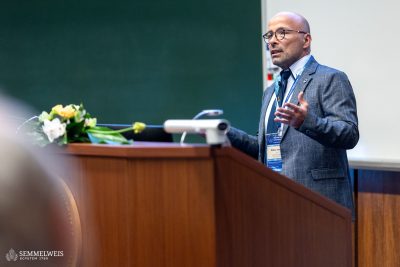 The concept is based on learning-by-doing, supported by a team of experts supplementing the mentor, as well as state-of-the-art technology, statisticians, and artificial intelligence. An innovation in the format of acquiring knowledge is that PhD students also teach back students of years below them, while lectures by leading international experts are also essential part of the program. Over the past three years, 264 students from 21 countries have joined the program. They collaborate with 40 institutions and their research covers almost the full spectrum of medicine, in particular dentistry, gastroenterology and pediatrics. Over the past two years, participants have published more than 150 papers, yet the main beneficiaries have been the patients, as, for instance, the mortality of people with acute pancreatitis has been significantly reduced, and by scheduling certain tests earlier an early detection of diabetes has been made possible for a significant proportion of children born with cystic fibrosis.
The concept is based on learning-by-doing, supported by a team of experts supplementing the mentor, as well as state-of-the-art technology, statisticians, and artificial intelligence. An innovation in the format of acquiring knowledge is that PhD students also teach back students of years below them, while lectures by leading international experts are also essential part of the program. Over the past three years, 264 students from 21 countries have joined the program. They collaborate with 40 institutions and their research covers almost the full spectrum of medicine, in particular dentistry, gastroenterology and pediatrics. Over the past two years, participants have published more than 150 papers, yet the main beneficiaries have been the patients, as, for instance, the mortality of people with acute pancreatitis has been significantly reduced, and by scheduling certain tests earlier an early detection of diabetes has been made possible for a significant proportion of children born with cystic fibrosis.
Problems are everywhere, the question is whether we wait for tomorrow or start taking action today. Tomorrow’s history is written today,
concluded Dr. Péter Hegyi.
Representing The Chinese University of Hong Kong, Directors Dr. Ling Qin and Dr. Jun Yu presented the activities and achievements of their institution in musculoskeletal and gastroenterology topics.
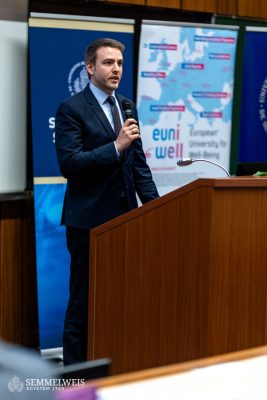 Hungary’s innovation and higher education strategy was presented by László Bódis, Deputy State Secretary for Innovation at the Ministry of Culture and Innovation. He highlighted the significant increase in funding for research networks, R&D and higher education, with the latter reaching 2 percent of last year’s GDP. The innovation ecosystem, businesses and incubation are structured around these, as new knowledge is affiliated with universities and research infrastructures. He also outlined the cornerstones of the John von Neumann Program, emphasizing the importance of the societal benefits of innovation along the lines of priority values such as health, digitalization, green transition and security. To this end, international cooperation is essential, as exemplified by the signing of today’s cooperation agreement.
Hungary’s innovation and higher education strategy was presented by László Bódis, Deputy State Secretary for Innovation at the Ministry of Culture and Innovation. He highlighted the significant increase in funding for research networks, R&D and higher education, with the latter reaching 2 percent of last year’s GDP. The innovation ecosystem, businesses and incubation are structured around these, as new knowledge is affiliated with universities and research infrastructures. He also outlined the cornerstones of the John von Neumann Program, emphasizing the importance of the societal benefits of innovation along the lines of priority values such as health, digitalization, green transition and security. To this end, international cooperation is essential, as exemplified by the signing of today’s cooperation agreement.
Before the signing of the agreement, Rector Dr. Béla Merkely reminded that on the first day of the symposium, two academic and two university organizations presented their activities with a view to concluding a professional agreement and developing translational medicine in synergy.
Around 2 million publications are currently published on PubMed every year, but only a fraction of the knowledge they contain is applied in everyday healthcare for the benefit of our patients. However, science is not slowing down, so the gap is expected to widen without the necessary structural and mindset change.
– Dr. Béla Merkely justified the need for translational thinking. He added that with the recent agreement, a European-Asian Translational Network is being created, and cross-continental cooperation can contribute to finding answers to global problems such as the coronavirus pandemic, cancer prevention and healthy ageing.
Following the introduction by the Rector Dr. Béla Merkely, representatives of Semmelweis University, Academia Europaea, the National Biomedical Foundation and The Chinese University of Hong Kong signed the cooperation agreement.
Dr. Balázs Gulyás, President of the Hungarian Research Network, summarized the past, present and future of the organization. As he pointed out, the name of the network reflects its new vision, as it brings together 49 research institutions and more than 6000 research staff, covering all fields of science. The institutes will not compete with each other, but rather complement one another in order to excel in their respective fields. The way forward, he outlined, is not to carry out research in a fragmented way, but along major lines, in synergy.
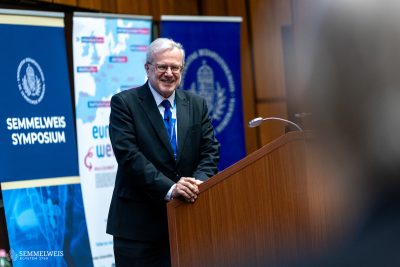 In terms of his personal vision, he noted that current medical education is disease-oriented, focusing on the recognition and treatment of diseases, yet an opposite approach is gaining ground, focusing on health protection, disease prevention and forecast. As life expectancy increases, there is a greater emphasis on extending the number of years in good health and on avoiding unsuccessful ageing. He is convinced that research collaborations will open a new era in the history of health.
In terms of his personal vision, he noted that current medical education is disease-oriented, focusing on the recognition and treatment of diseases, yet an opposite approach is gaining ground, focusing on health protection, disease prevention and forecast. As life expectancy increases, there is a greater emphasis on extending the number of years in good health and on avoiding unsuccessful ageing. He is convinced that research collaborations will open a new era in the history of health.
The second and third days of the scientific symposium focused on pancreatic diseases, and the event closed with a lecture by Nobel Prize-winning scientist Dr. Randy Schekman. A detailed coverage is available here.
Sponsors:
Viktória Kiss, Judit Szabados-Dőtsch
Photo: Attila Kovács – Semmelweis University
